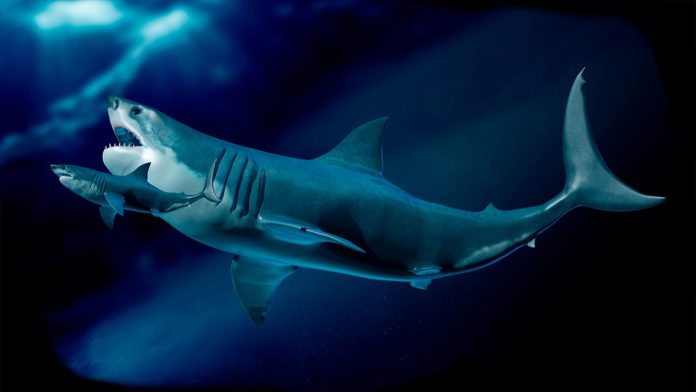A new study suggests that the largest sea predator of all time, Megalodon, probably fought with representatives of his species, using his huge teeth. This discovery helps to better understand not only the lifestyle of these ancient predators, but also their possible aggressive behavior.
Megalodons, who lived more than 3 million years ago, reached an incredible length of 19.8 meters and were the largest predators in the history of the oceans. Despite the popularity of Hollywood films depicting megalodons as huge, similar white predators, new studies indicate that these creatures had a more elongated body shape and were probably less thick than their modern relatives. One of the most striking aspects of megalodons was their teeth-the largest, ever found among sharks. These teeth had serrated edges, which allowed the predators to effectively break the prey. However, a recent study has discovered new aspects of megalodone behavior, including the presence of characteristic markings on the teeth found in North and South Carolina. Scientists suggest that these marks could be left by other sharks, probably during collisions between megalodons.
According to a brief report of the study, some megalodon teeth found in fossils show traces that could be left by other sharks, indicating the possibility of fights between representatives of one species. The study authors put forward several possible scenarios about how these markings could appear. The first option: the teeth could remain in the shark's mouth after they were knocked out during the fight. In this case, the broken teeth could be damaged by other teeth during the battle. The second option implies that Megalodon's teeth could be injured after the bite of prey, which left characteristic markings. But the most interesting is the third option: researchers believe that megalodons could enter aggressive battles with each other, in particular through territorial disputes, the struggle for prey or even for the right of mating. This casts doubt on traditional ideas about their behavior, opening new horizons to study these ancient marine predators. Similar types of sharks, such as large white sharks, sometimes show aggression due to fights related to territory or reproductive spores. However, although such aggression cases are recorded by scientists, these phenomena remain not fully studied.
This study further deepens our understanding of the complex and aggressive nature of megalodons, whose legacy remains one of the largest mysteries in the world.


